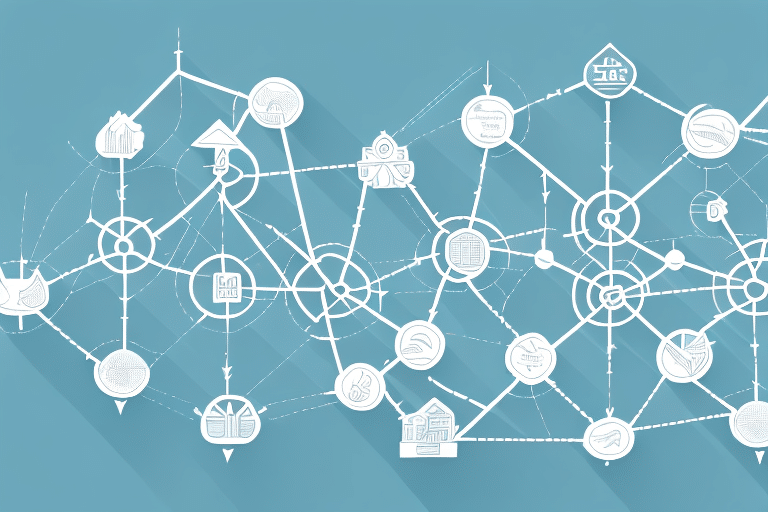What Is Logistics? A Comprehensive Guide to Understanding the Basics
Logistics is a critical component of business operations, encompassing the efficient planning, implementation, and management of the movement of goods and services from their origin to their final destination. This field covers a wide array of activities, including transportation, warehousing, inventory management, supply chain management, and more. According to a report by Statista, the global logistics market was valued at over $8 trillion in 2023, highlighting its significant role in the global economy.
In this comprehensive guide, we will delve into the intricacies of logistics, exploring its evolution, role in modern business operations, key elements, types, essential metrics, latest trends and innovations, the impact of e-commerce, common challenges faced by professionals, effective strategies for optimization, the integration of technology, sustainability practices, career opportunities, and the future outlook for the global logistics industry.
The Evolution of Logistics: A Historical Overview
The history of logistics dates back to ancient civilizations, where the transportation of goods was primarily done using camels, horses, and ships. The significance of logistics became more pronounced during the Industrial Revolution, with the introduction of steam engines, railroads, and canals, which revolutionized the transportation of goods. By the post-World War II era, logistics emerged as a distinct discipline, fueled by advancements such as cargo containerization and computerized inventory management systems.
In recent decades, globalization has intensified the demand for sophisticated logistics operations, as businesses seek efficient ways to manage complex supply chains spanning multiple countries and continents. The 21st century has seen further evolution with the rise of e-commerce, necessitating faster and more reliable delivery systems. Emerging technologies like drones and autonomous vehicles are poised to transform logistics by enhancing speed and reducing operational costs. Additionally, the focus on sustainability has led to the adoption of greener transportation methods, such as electric vehicles and alternative fuels, as companies strive to minimize the environmental impact of their logistics activities.
The Role of Logistics in Modern Business Operations
Logistics has transitioned from a basic function of moving goods to a strategic component integral to the success of modern businesses. An effective logistics system can:
- Enhance customer satisfaction by ensuring timely and accurate delivery of products.
- Reduce operational costs through optimized transportation and inventory management.
- Increase profitability by improving overall supply chain efficiency.
- Ensure compliance with regulatory requirements across different regions.
- Support sustainability initiatives by minimizing waste and reducing carbon emissions.
Furthermore, logistics plays a pivotal role in mitigating risks associated with supply chain disruptions, such as natural disasters or geopolitical events, by enabling businesses to adapt quickly through contingency planning and alternative sourcing strategies.
Understanding the Key Elements of Logistics: Transportation, Warehousing, and Inventory Management
Transportation
Transportation involves the physical movement of goods from one location to another, utilizing various modes such as trucks, ships, airplanes, and trains. Effective transportation management focuses on optimizing routes, reducing transit times, and minimizing costs. According to IBISWorld, transportation constitutes approximately 60% of logistics costs, underscoring its critical impact on overall logistics efficiency.
Warehousing
Warehousing entails the storage of goods before they are distributed to their final destination. It serves as a buffer between production and consumption, ensuring that products are available when needed. Modern warehouses leverage advanced technologies such as automated storage and retrieval systems (AS/RS), warehouse management systems (WMS), and robotics to enhance storage efficiency, reduce errors, and streamline operations.
Inventory Management
Inventory management involves tracking inventory levels, monitoring stock movements, and ensuring that the right products are available in the right quantities at the right time. Effective inventory management balances the costs of holding inventory against the need to meet customer demands promptly. Techniques such as just-in-time (JIT) inventory and demand forecasting play crucial roles in optimizing inventory levels and reducing excess stock.
The Importance of Supply Chain Management in Logistics
Supply chain management (SCM) is the orchestration of all activities involved in the production and delivery of goods and services, from sourcing raw materials to delivering finished products to consumers. A well-integrated supply chain can lead to:
- Cost reduction through streamlined operations and better resource utilization.
- Improved delivery times and increased reliability in meeting customer expectations.
- Enhanced product quality and consistency by maintaining stringent quality control throughout the supply chain.
- Greater agility and responsiveness to market changes and consumer demands.
Collaboration and communication among suppliers, manufacturers, distributors, and retailers are essential for effective SCM. Enhanced visibility and transparency within the supply chain allow for real-time tracking, identification of potential bottlenecks, and proactive problem-solving. Furthermore, SCM helps in mitigating risks related to supply disruptions, fluctuating demand, and compliance with international trade regulations.
The Different Types of Logistics: Inbound, Outbound, and Reverse
Inbound Logistics
Inbound logistics focuses on the movement of goods and materials from suppliers to the warehouse or production facilities. It includes activities such as sourcing, transportation, receipt, and storage of incoming goods. Efficient inbound logistics ensure that materials are available for production when needed, reducing downtime and avoiding production delays.
Outbound Logistics
Outbound logistics pertains to the distribution of finished products from the production facility to the end customers. This involves order processing, packaging, transportation, and delivery. Efficient outbound logistics are crucial for meeting customer demands, enhancing customer satisfaction, and maintaining competitive advantage.
Reverse Logistics
Reverse logistics deals with the return of goods from the customer back to the seller or manufacturer. This may involve processes like return management, recycling, refurbishment, and disposal. Effective reverse logistics can help in recovering value from returned products and reducing environmental impact.
Green Logistics
Green logistics integrates sustainable practices into logistics operations to minimize environmental impact. This includes using eco-friendly transportation modes, optimizing delivery routes to reduce fuel consumption, minimizing packaging waste, and implementing recycling programs. According to a study by the World Bank, the logistics sector contributes significantly to global greenhouse gas emissions, making green logistics essential for sustainable development.
E-commerce Logistics
The surge in e-commerce has necessitated the development of sophisticated logistics solutions to handle the high volume of orders and the need for rapid delivery. E-commerce logistics requires efficient order fulfillment, real-time tracking, flexible delivery options, and robust customer service to meet the expectations of online shoppers.
Key Metrics to Measure the Success of Your Logistics Operations
Measuring the performance of logistics operations is essential for continuous improvement and achieving business objectives. Key metrics to consider include:
- Delivery Time: The average time taken to deliver goods from the warehouse to the customer. Faster delivery times can enhance customer satisfaction and loyalty.
- Order Fulfillment Rate: The percentage of orders successfully delivered on time and in full. A high fulfillment rate indicates efficient logistics operations.
- Inventory Turnover Ratio: This ratio measures how often inventory is sold and replaced over a specific period. A higher ratio signifies effective inventory management and reduced holding costs. Learn more.
- Transportation Costs: The total cost associated with the movement of goods, including fuel, labor, and maintenance. Keeping transportation costs in check is crucial for maintaining profitability.
- Customer Satisfaction: Measured through surveys, feedback forms, and reviews, customer satisfaction reflects the quality of logistics services and impacts repeat business.
Tracking these metrics provides valuable insights into the efficiency and effectiveness of logistics operations, enabling businesses to identify areas for improvement and make data-driven decisions.
Latest Trends and Innovations in the World of Logistics
The logistics industry is at the forefront of adopting new technologies and embracing innovative practices to enhance efficiency and service quality. Some of the latest trends and innovations include:
- Predictive Analytics: Utilizing data analysis and machine learning algorithms to forecast demand, optimize routes, and predict potential disruptions. Predictive analytics enables logistics professionals to make proactive decisions and improve operational efficiency.
- Blockchain Technology: Implementing blockchain for secure and transparent supply chain transactions. Blockchain enhances traceability, reduces fraud, and improves trust among supply chain participants.
- Autonomous Vehicles: Exploring the use of drones and driverless trucks for delivery, which can reduce labor costs and increase delivery speed. Autonomous vehicles also offer the potential for 24/7 operations, further enhancing efficiency.
- Internet of Things (IoT): Integrating IoT devices for real-time tracking and monitoring of shipments, vehicles, and warehouse conditions. IoT provides valuable data for optimizing operations and ensuring the safety and security of goods.
- Artificial Intelligence (AI): Leveraging AI for route optimization, demand forecasting, and warehouse automation. AI-driven solutions can significantly enhance the decision-making process and operational efficiency.
These innovations are reshaping the logistics landscape, enabling companies to meet the growing demands for speed, reliability, and sustainability.
The Impact of E-commerce on Logistics Operations and Strategies
The exponential growth of e-commerce has had a profound impact on logistics operations and strategies. Key influences include:
- Increased Order Volume: The surge in online shopping has led to higher order volumes, necessitating scalable logistics solutions to handle peak periods such as holidays and sales events.
- Last-Mile Delivery: The focus on last-mile delivery, which involves transporting goods from distribution centers to the final customer, has intensified. Efficient last-mile solutions are crucial for reducing delivery times and enhancing customer satisfaction.
- Omnichannel Fulfillment: Integrating online and offline sales channels requires seamless logistics operations to ensure consistency and efficiency across all platforms.
- Real-Time Tracking: Customers now expect real-time tracking of their orders. Providing accurate and up-to-date tracking information enhances transparency and trust.
- Flexible Delivery Options: Offering various delivery options, such as same-day delivery, scheduled delivery windows, and pickup points, caters to diverse customer preferences.
To thrive in the competitive e-commerce landscape, logistics providers must adopt innovative strategies that prioritize speed, flexibility, and customer-centric services.
Common Challenges Faced by Logistics Professionals and How to Overcome Them
Logistics professionals encounter a multitude of challenges that can impact the efficiency and effectiveness of operations. Some common challenges include:
- Balancing Cost and Service: Achieving the right balance between minimizing costs and maintaining high service levels is a perennial challenge. Solutions include optimizing routes, leveraging technology to reduce inefficiencies, and negotiating favorable rates with suppliers.
- Managing Complex Supply Chains: Global supply chains involve multiple suppliers, partners, and intermediaries. Effective communication, robust supply chain visibility, and advanced SCM tools are essential for managing complexity.
- Regulatory Compliance: Navigating varying regulations across different regions can be daunting. Staying informed about regulatory changes, investing in compliance training, and using compliance management software can help mitigate this challenge.
- Inventory Management: Maintaining optimal inventory levels to meet demand without overstocking requires accurate demand forecasting and efficient inventory tracking systems.
- Workforce Management: Ensuring that the logistics workforce is adequately trained and motivated is critical. Investing in employee training, offering competitive compensation, and fostering a positive work environment can improve workforce stability and performance.
Overcoming these challenges requires a combination of strategic planning, technological investments, and continuous process improvement to enhance the resilience and agility of logistics operations.
Effective Strategies for Improving Your Company's Logistic Processes
Enhancing logistics processes involves adopting strategies that drive efficiency, reduce costs, and improve service quality. Some effective strategies include:
- Continuous Improvement: Implementing methodologies such as Lean and Six Sigma to identify and eliminate waste, streamline processes, and enhance operational efficiency.
- Lean Logistics: Focusing on reducing non-value-added activities and optimizing workflows to achieve greater efficiency and lower costs.
- Total Quality Management (TQM): Emphasizing quality in every aspect of logistics operations to ensure consistent and reliable service delivery.
- Automation and Technology Integration: Utilizing automation technologies and integrating advanced software solutions to streamline operations, reduce errors, and improve data accuracy.
- Collaboration and Partnership: Building strong relationships with suppliers, carriers, and other partners to foster collaboration, enhance communication, and drive mutual success.
By implementing these strategies, companies can create more efficient and responsive logistics operations that are better equipped to meet the demands of a dynamic market.
Harnessing the Power of Technology for Better Logistics Management
Technology plays a pivotal role in modern logistics management, offering tools and solutions that enhance productivity, streamline processes, and reduce costs. Key technologies include:
- Warehouse Management Systems (WMS): WMS software helps manage warehouse operations, including inventory tracking, order fulfillment, and space utilization, leading to increased efficiency and accuracy.
- Transportation Management Systems (TMS): TMS solutions optimize transportation planning, execution, and monitoring, helping companies select the best carriers, routes, and delivery methods.
- Enterprise Resource Planning (ERP) Software: ERP systems integrate various business processes, providing a unified view of operations and facilitating better decision-making.
- Real-Time Tracking: GPS and IoT technologies enable real-time tracking of shipments, vehicles, and inventory, providing valuable data for optimizing logistics operations.
- Automation and Robotics: Automated systems and robotics improve speed and accuracy in warehousing and distribution centers, reducing labor costs and minimizing errors.
Adopting these technologies allows logistics professionals to achieve greater visibility, enhance operational efficiency, and provide superior service to customers.
Sustainability in Logistics: Best Practices for a Greener Supply Chain
The logistics industry has a significant environmental footprint, with transportation being a major contributor to greenhouse gas emissions. To address these challenges, companies are implementing sustainable practices aimed at reducing their environmental impact. Best practices for sustainability in logistics include:
- Eco-Friendly Transportation: Utilizing electric or hybrid vehicles, optimizing routes to reduce fuel consumption, and adopting alternative fuels to lower emissions.
- Optimizing Delivery Routes: Implementing route optimization software to minimize distance traveled, reduce fuel usage, and lower transportation costs.
- Reducing Packaging Waste: Using recyclable or biodegradable packaging materials, minimizing excess packaging, and encouraging reusable packaging solutions.
- Renewable Energy Sources: Incorporating renewable energy, such as solar or wind power, into logistics facilities and operations to decrease reliance on fossil fuels.
- Green Warehousing: Designing energy-efficient warehouses, implementing energy-saving measures like LED lighting and HVAC optimization, and promoting sustainable building practices.
By adopting these sustainable logistics practices, companies not only contribute to environmental conservation but also enhance their corporate social responsibility (CSR) profiles and appeal to environmentally conscious consumers.
Career Opportunities in the Field of Logistics: Skills Required and Growth Prospects
The logistics industry offers a diverse range of career opportunities for professionals with various skills and expertise. Key roles in logistics include:
- Logistics Manager: Oversees the planning and coordination of logistics operations, including transportation, warehousing, and inventory management.
- Supply Chain Analyst: Analyzes supply chain data to identify trends, optimize processes, and improve overall efficiency.
- Transportation Coordinator: Manages the scheduling and routing of shipments, ensuring timely and cost-effective deliveries.
- Warehouse Supervisor: Oversees warehouse operations, including inventory control, order fulfillment, and staff management.
- Procurement Specialist: Manages the sourcing and purchasing of materials and goods needed for production and operations.
Essential skills for careers in logistics include:
- Supply Chain Management: Understanding the end-to-end supply chain process and strategies for optimization.
- Analytical Skills: Ability to analyze data and derive actionable insights to improve logistics operations.
- Problem-Solving: Identifying and addressing challenges to ensure smooth logistics processes.
- Communication: Effective communication with team members, suppliers, and customers to facilitate collaboration.
- Technological Proficiency: Familiarity with logistics software, data analysis tools, and automation technologies.
The logistics industry is poised for continued growth, driven by factors such as the expansion of e-commerce, increasing globalization, and advancements in technology. According to the U.S. Bureau of Labor Statistics, employment of logisticians is projected to grow by 4% from 2020 to 2030, reflecting the industry's robust demand for skilled professionals.
Future Outlook for the Global Logistics Industry: Opportunities and Challenges Ahead
The global logistics industry is set to experience substantial growth, with the market size expected to reach new heights driven by several key factors:
- Growth of E-commerce: The ongoing rise of online shopping continues to drive demand for efficient and flexible logistics solutions, particularly in areas like last-mile delivery and omnichannel fulfillment.
- Advancements in Technology: Innovations such as artificial intelligence, machine learning, and blockchain are revolutionizing logistics operations, enabling greater efficiency, transparency, and automation.
- Globalization: As businesses expand into new international markets, the need for comprehensive logistics networks that can manage cross-border supply chains effectively increases.
- Sustainability Initiatives: Growing emphasis on environmental sustainability is encouraging the adoption of green logistics practices, presenting both opportunities for innovation and challenges in implementation.
However, the industry also faces significant challenges that must be addressed to sustain growth and competitiveness:
- Rising Transportation Costs: Fluctuations in fuel prices and increased labor costs can impact the overall cost structure of logistics operations.
- Regulatory Compliance: Navigating complex and varying regulations across different regions requires continuous monitoring and adaptation.
- Supply Chain Disruptions: Events such as pandemics, geopolitical tensions, and natural disasters can disrupt supply chains, emphasizing the need for resilience and contingency planning.
- Talent Shortage: The industry faces a shortage of skilled logistics professionals, highlighting the importance of training and education programs to develop the necessary workforce.
To thrive in this dynamic landscape, companies must develop flexible, innovative, and customer-centric strategies that leverage technology, embrace sustainability, and foster strong partnerships across the supply chain.
Conclusion
Logistics is an intricate and ever-evolving discipline that plays a pivotal role in the success of modern business operations. By implementing effective logistics strategies, organizations can enhance customer satisfaction, lower operational costs, and boost profitability. Staying abreast of the latest trends and technological advancements, adopting sustainable practices, and investing in skilled professionals are essential for navigating the competitive logistics landscape. As the global logistics industry continues to grow and transform, businesses that prioritize efficiency, innovation, and adaptability will be well-positioned to achieve long-term success.






















